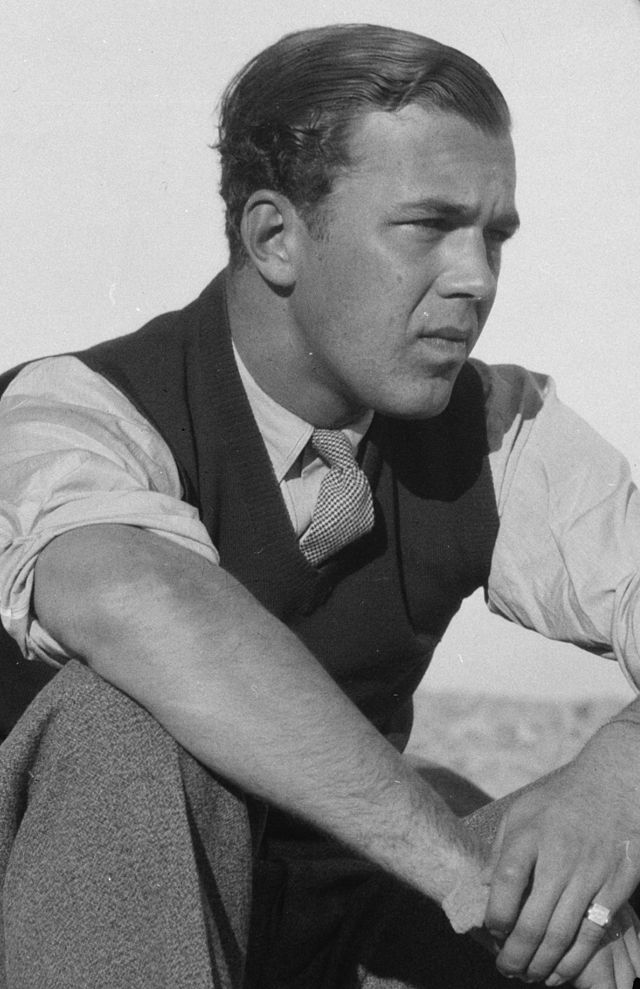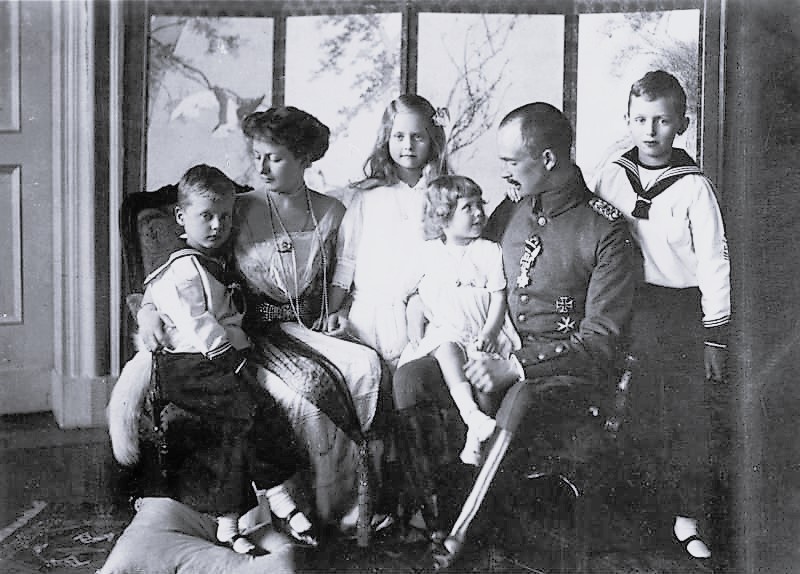by Susan Flantzer
© Unofficial Royalty 2015

Prince Bertil of Sweden, Duke of Halland; Credit – Wikipedia
Prince Bertil of Sweden was born on February 28, 1912, at the Royal Palace in Stockholm, Sweden. His full name was Bertil Gustaf Oskar Carl Eugén. Except for his first name, which was a new name for the Swedish royals, he was named after the four sons of King Oscar II of Sweden in order of their birth. At the time of his birth his parents, the future King Gustav VI Adolf of Sweden and Princess Margaret of Connaught, were the Crown Prince and Princess of Sweden. Bertil’s mother was the daughter of Prince Arthur, Duke of Connaught, and therefore a granddaughter of Queen Victoria. Bertil was the fourth of her parents’ five children. He had three brothers and one sister:
- Prince Gustaf Adolf, Duke of Västerbotten (1906 – 1947), married Princess Sibylla of Saxe-Coburg and Gotha; had five children including King Carl XVI Gustaf of Sweden
- Prince Sigvard, Duke of Uppland (1907 – 2002) later Count Sigvard Bernadotte af Wisborg, married three times, had one son
- Princess Ingrid (1910 – 2000) married King Frederick IX of Denmark, and had issue including Queen Margrethe II of Denmark
- Prince Carl Johan, Duke of Dalarna (1916 – 2012) later Count Carl Johan, Bernadotte af Wisborg, married two times, no issue, was the last surviving great-grandchild of Queen Victoria

The infant Bertil with his older siblings and parents; Photo Credit – Wikipedia
In 1920, when Bertil’s mother was eight months pregnant with her sixth child, she underwent mastoid surgery. An infection developed which killed Crown Princess Margaret, at the age of 38, and her unborn child on May 1, 1920. Eight-year-old Bertil and four siblings ranging in age from three to fourteen years old were left motherless. In 1923, Bertil’s father married Lady Louise Mountbatten, daughter of Prince Louis of Battenberg (1917 Louis Mountbatten, 1st Marquess of Milford Haven) and Princess Victoria of Hesse and by Rhine, a granddaughter of Queen Victoria. The couple remained childless and became King and Queen of Sweden in 1950.
Bertil served as an active naval officer. He trained aboard the torpedo cruiser Eagle in 1928 and the destroyer Nordenskjold in 1929 and then enrolled at the Royal Naval College in 1931. Bertil trained as an officer aboard several ships and was commissioned as an officer in 1934. From 1935-1937, Bertil was an assistant naval attaché in Paris. During World War II, Bertil served as a torpedo officer aboard several ships. From 1942 to 1945, he served as an assistant naval attaché in London.
In 1943, when Bertil worked as a naval attaché in London, he met Welsh-born Lilian Craig (born May Lillian Davies) who was married to Scottish actor Ivan Craig. Bertil and Lilian soon became a couple, but their relationship remained a secret to the public for a long time. Craig was serving in World War II and when he returned home in 1945, the couple had an amicable divorce. In 1947, Bertil’s elder brother Prince Gustaf Adolf, who was second in the line of succession, died in a plane crash. Prince Gustaf Adolf’s son Carl Gustaf was less than a year old and now was number two in the line of succession. It seemed likely that Bertil might need to serve as Regent as all the other princes had given up their place in the succession because of unacceptable marriages. For this reason, Bertil decided not to marry Lilian. Instead, they discreetly lived together for more than 30 years. Bertil never did become Regent and his nephew Carl Gustaf succeeded his 90-year-old grandfather King Gustaf VI Adolf in 1973. King Carl XVI Gustaf, who had married a commoner himself, approved the marriage of Bertil and Lilian. The couple married on December 7, 1976, at the Drottningholm Palace Chapel in the presence of the king and the queen. Bertil and Lilian had no children.
The 1980 Act of Succession stated that only the descendants of King Carl XVI Gustaf may inherit the throne. However, a special case was made for Bertil and he became third (and, after the birth of Princess Madeleine in 1982, fourth) in line to the throne.
Prince Bertil, aged 84, died on January 5, 1997, at his home, Villa Solbacken in Djurgården, Sweden, after several years of declining health. He was buried at the Royal Burial Ground in Haga Park in Solna, Stockholm, Sweden. Princess Lilian survived her husband for sixteen years, dying on May 10, 2013, at the age of 97.
This article is the intellectual property of Unofficial Royalty and is NOT TO BE COPIED, EDITED, OR POSTED IN ANY FORM ON ANOTHER WEBSITE under any circumstances. It is permissible to use a link that directs to Unofficial Royalty.


























